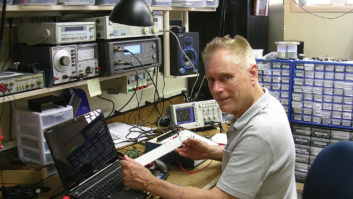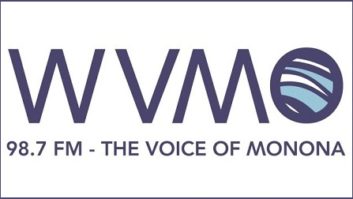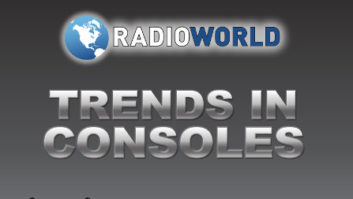In a company the size of the one I work for, it seems like we are always dealing with a studio lease somewhere. Most of the time, because moving is such a colossal pain, this is simply a renewal, but from time to time we do have to move. When that is the case, I have a long, difficult process to go through that starts more than a year before the actual move.
I do this sort of thing on a regular basis, but my guess is that most radio engineers do not. A studio move may be a singular event for many. Hopefully, knowing some of the pitfalls to watch out for in the process can save a lot of grief. While this discussion is targeted at lease situations, much of it also applies to property purchases for studio use.
It’s common for a manager or owner to go out and find a studio leasehold on his or her own without consulting with the station’s engineer. That is a mistake. At the very least, it might result in a less than optimum situation — one that the station will be stuck with for years to come. The task of building out the new facility and moving is likely to be more difficult than it should be. In the worst case, the location may not work at all. It’s even possible that the station may not qualify as a “main studio” location.
To avoid making a big mistake, the chief engineer should be involved in the process from the very start.

Scout the rooftop for potential STL antenna mounting locations. Parapets and elevator penthouses often make good antenna mounts. In this first part of a two-part series, we’ll deal with the go/no-go due diligence items. In the December issue, we’ll finish up with some pointers on studio leases and tenant finishes.
THE ESSENTIALS
We’ve all heard that the three most important factors in any real estate transaction are “location, location, location.” There is a lot of truth in that statement, and it is especially true when it comes to radio station studio leaseholds. There are many important factors to consider with respect to location, a few of which are:
- • Main studio eligibility
- • Zoning
- • Line of sight to the tower
- • STL frequency availability
- • Telco service availability (ISDN, T1 and DSL)
- • Satellite antenna siting
The FCC rules are very specific as to main studio location. Section 73.1125 spells out the criteria. The location must be within the community of license or within the city-grade contour of any station licensed to that community or within 25 miles of the reference coordinates of the community of license.
If you’re locating within your city of license, you’re good to go, but if you’re in a situation where your city of license is some distance from your desired location, one of the other two criteria applies. The reference coordinates for most communities can be looked up on the FCC’s Web site at the following URL: www.fcc.gov/mb/audio/bickel/ atlas2.html. Finding out whether a location being considered is within 25 miles of the reference coordinates is a simple matter of finding the coordinates of the new location, looking up the community reference coordinates and doing a distance calculation between the two.
One important caveat: Be careful that you use the same datum for both sets of coordinates. Community reference point coordinates use the NAD27 datum. If you use a GPS to determine the coordinates of the site under consideration, be sure to switch the datum in the GPS unit to NAD27 or else convert those coordinates to NAD27.
The other option is a bit more of a challenge — determining whether a location is within the city-grade contour (3.16 mV or 70 dBu for FM and 5 mV for AM) of any station licensed to your station’s community of license. There are tools on the FCC Web site that can help with this, but one method I have used for AM stations doesn’t require a lot of work. Simply take the field meter out to the new location and see if your station produces a 5 mV or better field intensity. If it does, by definition that locale is within the contour.
A Longley-Rice study is a good way to determine whether a site is within an FM station’s contour. This type of study is generally not something a station engineer can do on his own; the services of a consulting engineer will be needed. The good news is that for a main studio eligibility study, only one radial need be run, and that should help keep costs down. Be sure to keep the study handy in case an FCC inspector later challenges the site’s eligibility.
Zoning is often the last thing anyone thinks about when it comes to studio leaseholds. That’s the landlord’s problem, right? Wrong! If radio station studios are not included in the permitted uses for a particular location, when the building permit application is filed you’re going to get a big surprise — you’ll have to go through the conditional use permit process, rezone the property or get a variance, none of which is easy or fast.

5.8 GHz unlicensed links can be used as an alternative to traditional 950 MHz STL systems. In reality, you can forget about rezoning because the landlord is unlikely to go along with that, so that leaves conditional use and variance. Count on at least 90 days in most venues to get an answer, and there is no guarantee that you’ll get the answer you want. It’s entirely possible that the application will be rejected and you’ll have to look elsewhere for that new studio space.
The lesson here is to check the property zoning first and make sure you’re covered.
CAN YOU BUILD AN STL?
The next couple of items on the list are related: line of sight to the tower and clear frequency availability. Without a clear line of sight to the tower, it won’t matter if there is a clear frequency, so that’s a good place to start.
If you can stand on the roof and see the tower, you should, in most cases, be good to go unless there are obstructions along the path that would make it a “grazing” path. Probably the worst-case situation is where there is an obstacle close to the studio — a building across the street, a line of trees or a hill. Such obstacles may not obstruct the direct path but they do produce considerable attenuation and will likely cause scatter that can interfere with other stations.
If the path is anything other than absolutely clear with no obstacles on either end, part of your due diligence should be to retain a consulting engineer to do a path study, or, if you have the tools and expertise, to conduct such a study yourself. You can do a path study using the profile tools available in many mapping programs. One of my favorites is DeLorme TopoUSA. Version 8 is the current release. You can plot a point for each end of the path, draw a line between them and have the program generate a profile. You can then analyze the path topography to make sure it is clear. Always drive the path and note the location and height of any obstacles.
Once you have a clear line of sight, finding a clear frequency is next on the list. Assuming you have an existing frequency, the best course of action is to see if it’s possible to use that frequency from the new location. The services of a consulting engineer or frequency coordinator should be used for this. Companies such as Terrestrial RF Licensing and Micronet offer such services and can in many cases give a quick answer. When the time comes, they can then perform the FCC-required PCN coordination and even file the FCC application. If the existing frequency is unavailable in the new locale, they can do a search for a new one.
There are options other than the 944–952 MHz aural STL band for studio-to-transmitter links. Licensed point-to-point microwave links above 18 GHz are a good, cost-effective option in many parts of the country, especially if the path is relatively short. Unlicensed 5.7 or 2.4 GHz links may also be viable in many locations. I have used such links with success in several major markets. The bottom line is that if you have a clear path, chances are you can find a frequency to use, even if it is outside the normal STL band.
WHAT ABOUT TELEPHONE SERVICES?

Be sure to check the availability of satellite antenna siting at a prospective leasehold. Telco service is a critical component of just about any radio station operation. Who doesn’t have ISDN these days? We use it for all sorts of program delivery purposes, from remote broadcasts to play-by-play. But it isn’t available everywhere. Don’t assume that just because a building has a 100-pair telco cable coming in that ISDN service is available.
Some stations also use T1 lines for various purposes, from STL to PRI (regular phone service) to Internet. Again, don’t assume that a T1 circuit can be installed. In older buildings in particular, many cable pairs may have failed over the years, leaving just a few (if any) available for new circuits. Talk to the telephone company and make sure before you commit.
DSL is another important service that we can’t do without these days, and it’s not available everywhere. There is an important go/no-go factor with DSL — distance to the central office — that must be below a certain threshold value. Check with the phone company and don’t make any assumptions, regardless of the geographic distance to the nearest C.O. You may be surprised to find that the C.O. feeding the location is not the one just down the street!
THOSE PESKY ANTENNAS
Satellite antennas are an everyday part of radio station operation. We need them to bring in network feeds and other programming. The problem is that they’re big and ugly. Many communities require a special or conditional use permit for satellite antennas, and others also require them to be fenced or hidden.
Is the landlord willing to allow you to put one or more satellite antennas in the parking lot or on the roof? Is the roof structurally capable of supporting such an antenna? Is there terrestrial interference at the new locale? These are all questions that must be answered before you commit to a new studio location.
One possibility, if you employ a high-bandwidth link to the transmitter, is placing the satellite antenna(s) at the transmitter site. You can use the bi-directional STL link to backhaul satellite audio (digital or analog) and control (relay) signals to the studio, keeping the satellite antennas out where they are not an issue. This might well become the deciding factor when selecting an STL frequency. A couple of additional thoughts in closing: Watch out for buildings in historical districts or office “condos” where there is a Home Owners Association or architectural committee in place. In historical districts, you are unlikely to get clearance to install an STL or satellite antenna unless it can be completely hidden inside an existing parapet. If there is an HOA or architectural committee, you will have to get their approval for any outside antennas.
Finally, make sure that radio reception is good in the proposed new location. FM stations shouldn’t have too much trouble unless the building is in an urban canyon. Remember that you need to hear not only your own signal but that of the EAS LP-1 and LP-2 stations as well. AM stations probably would not want to locate across the street from or next door to a welding shop. I have been involved in leasehold situations where it was impossible to get a clean off-air signal, with everything else being fine. Don’t forget to check that important item.
Cris Alexander is the director of engineering at Crawford Broadcasting and a recent recipient of SBE’s Broadcast Engineer of the Year award.










